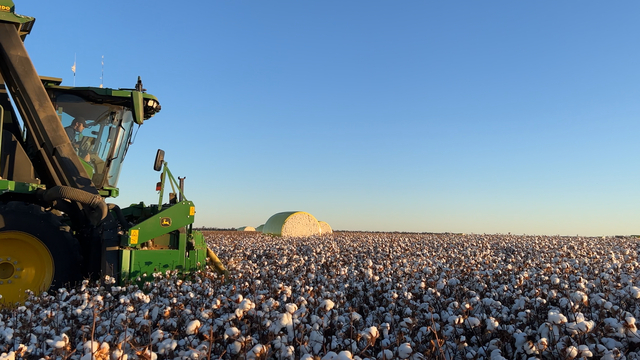
Dryland crops have received an A-plus from Cotton Australia’s regional managers as cotton picking progresses through southern Queensland.
Sally Rigney, Cotton Australia regional manager of St George, Dirranbandi and Mungindi said in her region, the dryland cotton from Mungindi to Moree was “fantastic“.
“It has been a textbook season, with rain coming at the right time,“ she said.
“The dryland cotton is looking like an irrigated crop. The other day I had a grower there say he had waited his whole life for a crop like this!“
Picking is also underway at St George, with those not picking yet expected to start over the coming weeks. Growers there, as well as Dirranbandi, are reporting reduced hectares due to rain coming too late.
In Emerald, picking is underway, with most cotton farmers likely to “grow on“ the crop with conditions expected to be favourable over the coming weeks to add extra yield to crops.
Dryland crops there are also looking “very good“ considering the rain arrived at the right time for those with seed in the ground.
On the Darling Downs, growers started defoliating in mid-March, with picking expected early April. Dryland crops are going well and another 50mm of rain would finish the crop off nicely.
“Last season was wall-to-wall white fluff – a record production year – this year is a lovely average crop,“ Ms Rigney said. “And, with full moisture profiles, we look forward to next season.“
Close to 480,000 green hectares of cotton was planted in 2023/24, predominantly in Queensland and NSW, with the Northern Territory and Western Australia also growing cotton.
Of Australia’s 1500 cotton growers, 90 per cent of them family farmers.
Cotton Australia CEO Adam Kay said the crop results looked positive considering the predictions last September of an El Nino.
“Our growers were expecting a long hot and dry summer forcing a crop revision below four million bales.
“The rains across our largest growing areas were very welcome and now we are expecting at least 4.5 million bales, which will result in more than $3.6 billion for the Australian economy, much of which will flow back into rural and regional communities.”
In the Macintrye Valley they are expecting average yields with boll size down. Growers haven’t started picking yet and many are looking to the last water and defoliation with picking expected to start in early to mid-April.
In northern New South Wales, it’s a mixed result with average to above average crops expected, depending on the location and picking to start around Easter.
Dryland crops will have benefited from earlier rain, however the weather has been kinder to irrigators and the warm days and nights have helped finish the season well.
Gins are looking to start ginning cotton from mid to late April.
At the other end of the country, Northern Territory growers say their crops are looking “okay“ despite heavy and consistent rain, which has hindered production.
Growers have planted about 12,000ha, similar to last season and growers are hoping for some sunshine to assist fruit development.
Picking isn’t expected until mid to late June.
In Kununurra there’s a couple of weeks left in the planting window and, given wet weather has kept growers off their paddocks, they are in the middle of planting now.
Some paddocks went in during the first week of February and they are progressing towards picking in August.
Mr Kay said the good season was cause to celebrate in every one of the 249 communities where cotton is being grown across the country.
“It means more than $3.5 billion dollars will filter down through each area and that helps support jobs in regions that need them most.”





